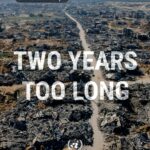There could not have been better moments for the families of Israelis and Palestinians to see their loved ones come home. And this is exactly what happened when those hostages who are alive were released by Hamas, and the Palestinians languishing in Israeli jails were set free.
But the anguish continues for those who are yet to hear the fate of their beloved. At the time of writing, only a small set of remains has been returned. The deeper sorrow is whether the final figure of those presumed dead will be accounted for, or if this sordid chapter on Gaza can be closed once and for all.
The issue of the remains of those presumed dead is, on the one hand, a humanitarian problem, but with political overtones. Affected families will want to know from the Benjamin Netanyahu government how it could sign off on a deal in the face of ambiguity or take the word of Hamas at face value, knowing its track record. On the other hand, there will be those who will ask if negotiators went ahead with the plan knowing the uncertainties. Some will also argue that Prime Minister Netanyahu went ahead knowing the pitfalls for reasons of political expediency.
In the midst of joy and anxiety in Gaza come the first signs of reality as well. At one level are the footage of Gazans making a painful trek to the streets and homes where they once lived, only to be confused in their own neighborhoods leveled in the name of coming to terms with terrorism. In another setting are fears that the stage is being set for a return of terror, retaliation, and levels of brutality and barbarism not seen even in primitive societies. There is a video circulating of Hamas executing a group of men accused of being looters, drug peddlers, and collaborators. What happened to the Peace Plan that initially spoke of Hamas being taken off the streets and stripped of any role?
Somebody has either been giving Hamas a long rope or has not taken seriously what that terror outfit has been saying all along: that it will not be a party to being totally left out of the evolving process or laying down their weapons. At least one report speaks of Hamas willing to lay down “heavy weapons” but not surrender small arms. “A U.S. official and a source with knowledge said Hamas expressed its willingness to give up its heavy weapons—mainly rockets and missiles—to a Palestinian or Arab entity but insisted on keeping guns for self-defense,” Axios has reported. President Donald Trump has maintained that the effort to disarm Hamas would continue and threatened it would be carried out “perhaps violently” if it did not do so on its own.
It is not clear if President Trump and Prime Minister Netanyahu will agree to Hamas keeping its light weapons. But to see the group openly returning to the scene waving proudly their wares is the first indication of bigger troubles that await the Gazans. In the midst of open warfare in the streets between thugs—supposedly armed to the hilt with stolen weapons given by “others”—and Hamas, which country would feel comfortable sending troops as part of an International Stabilization Force? In fact, no one seems to be in any great hurry to talk about this part of the peace plan that is dependent on agreement about which countries are going to be part of this process.
The larger and immediate problem has to do with the ceasefire that seems to be holding, albeit tenuously. But if push came to shove, it would not take Prime Minister Netanyahu more than a nanosecond to strike back and on a scale that is all too well known, plunging Gaza and the Middle East into another round of uncertainty. As it is, accusations are flying around of violations, including one of Israel killing at least nine Palestinians in areas still under control, failing to open the Rafah crossing, and reducing the amount of aid allowed into Gaza.
Supporters of Israel argue that Hamas has also violated the terms of the truce by failing to hand over the remains of 28 hostages that died or were killed in captivity, returning only four by the first count and later put at eight.
There is no doubt that President Trump has spent a lot of domestic and international capital in putting up a Peace Plan and formalizing it through a summit of some twenty leaders at Sharm el-Sheikh in Egypt. No one imagined that leaning on Prime Minister Netanyahu and the far right in Israel would be an easy job; so was conveying a blunt message to the terror outfit Hamas and its backers in the region that there is a price to pay.
For President Trump now comes the hard part in making sure that his plan, so carefully woven, should hold in the face of difficult odds. That would be more satisfying than receiving lavish praise from so-called leaders of the free world.
Disclaimer: The opinions and views expressed in this article/column are those of the author(s) and do not necessarily reflect the views or positions of South Asian Herald.






